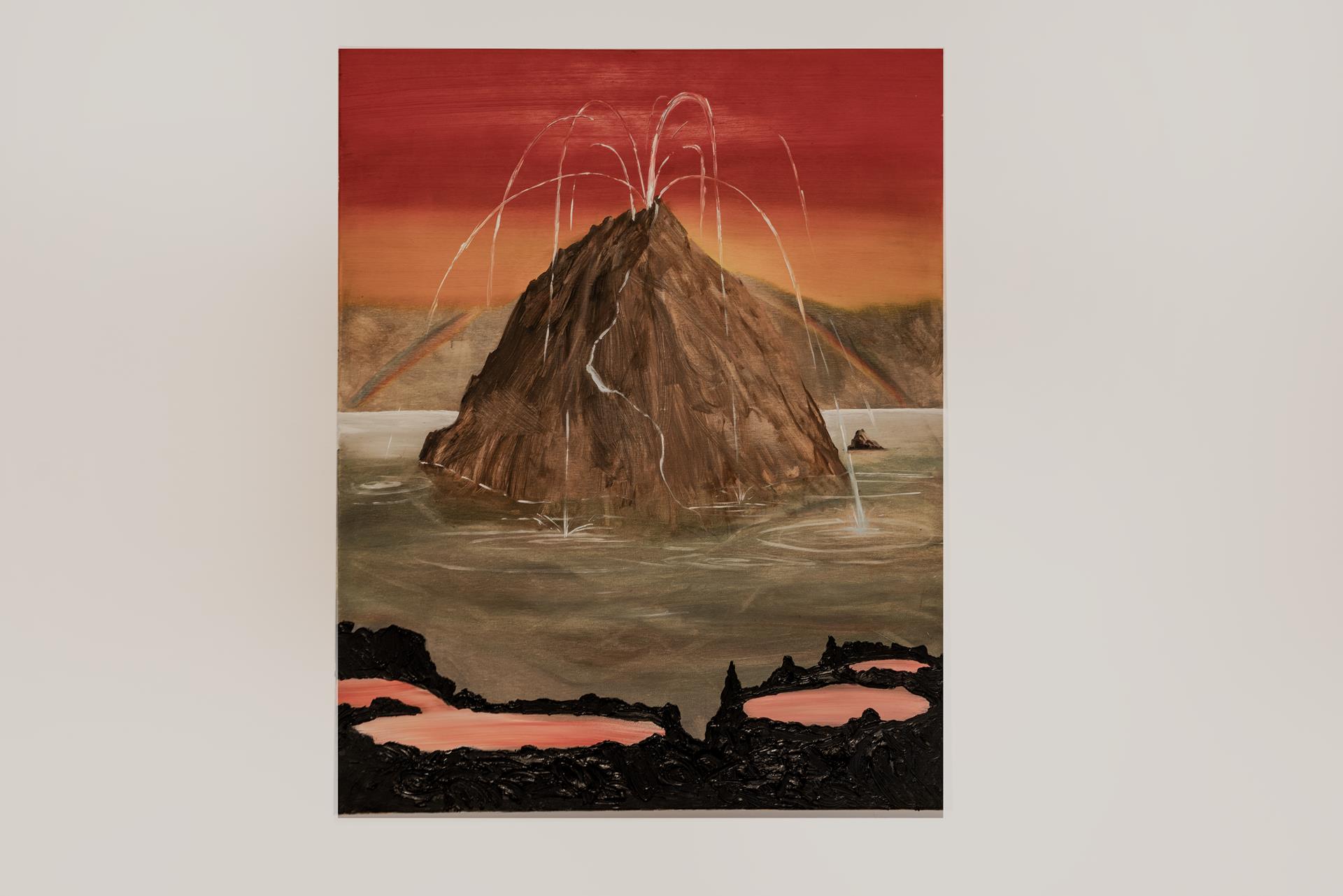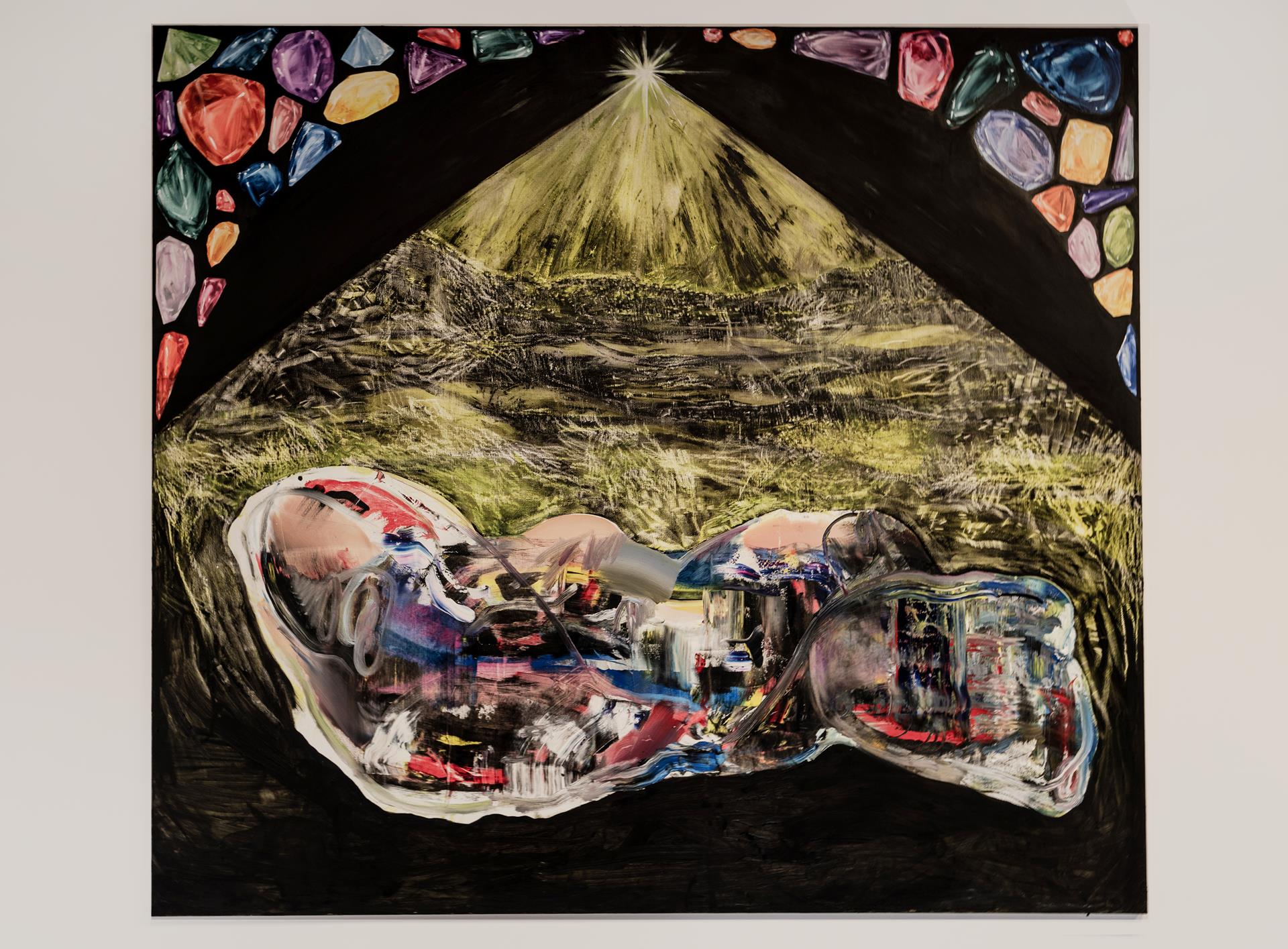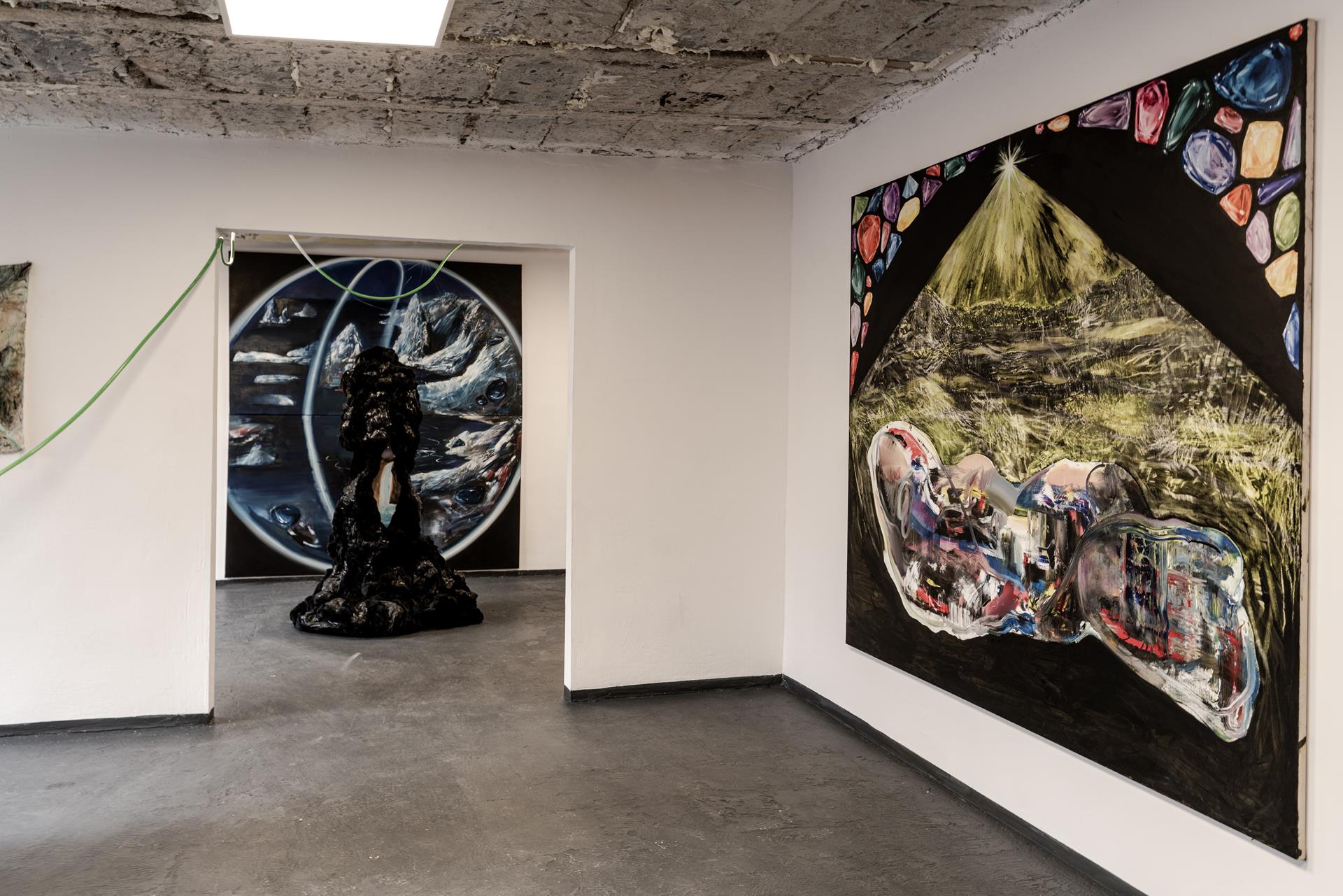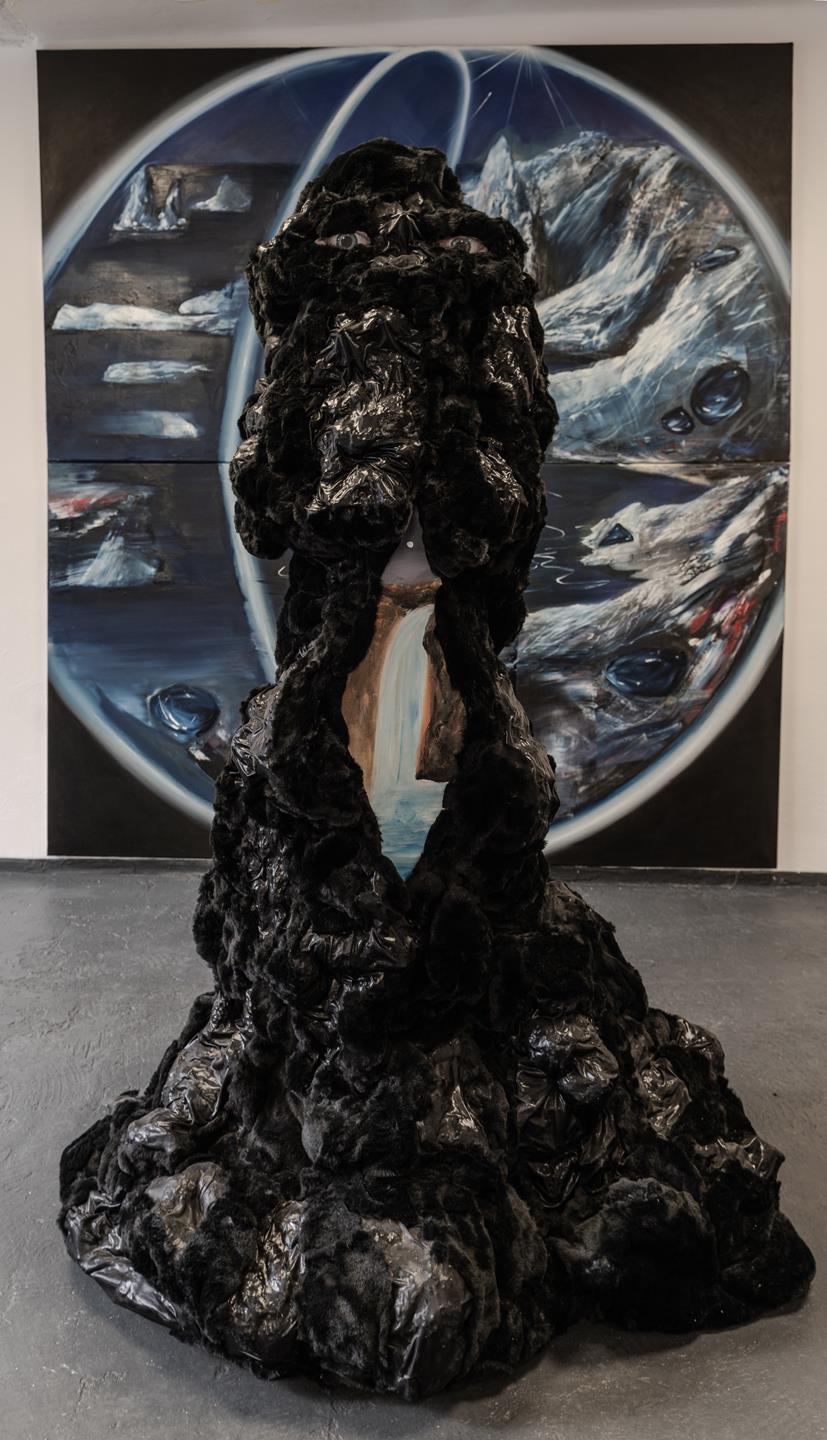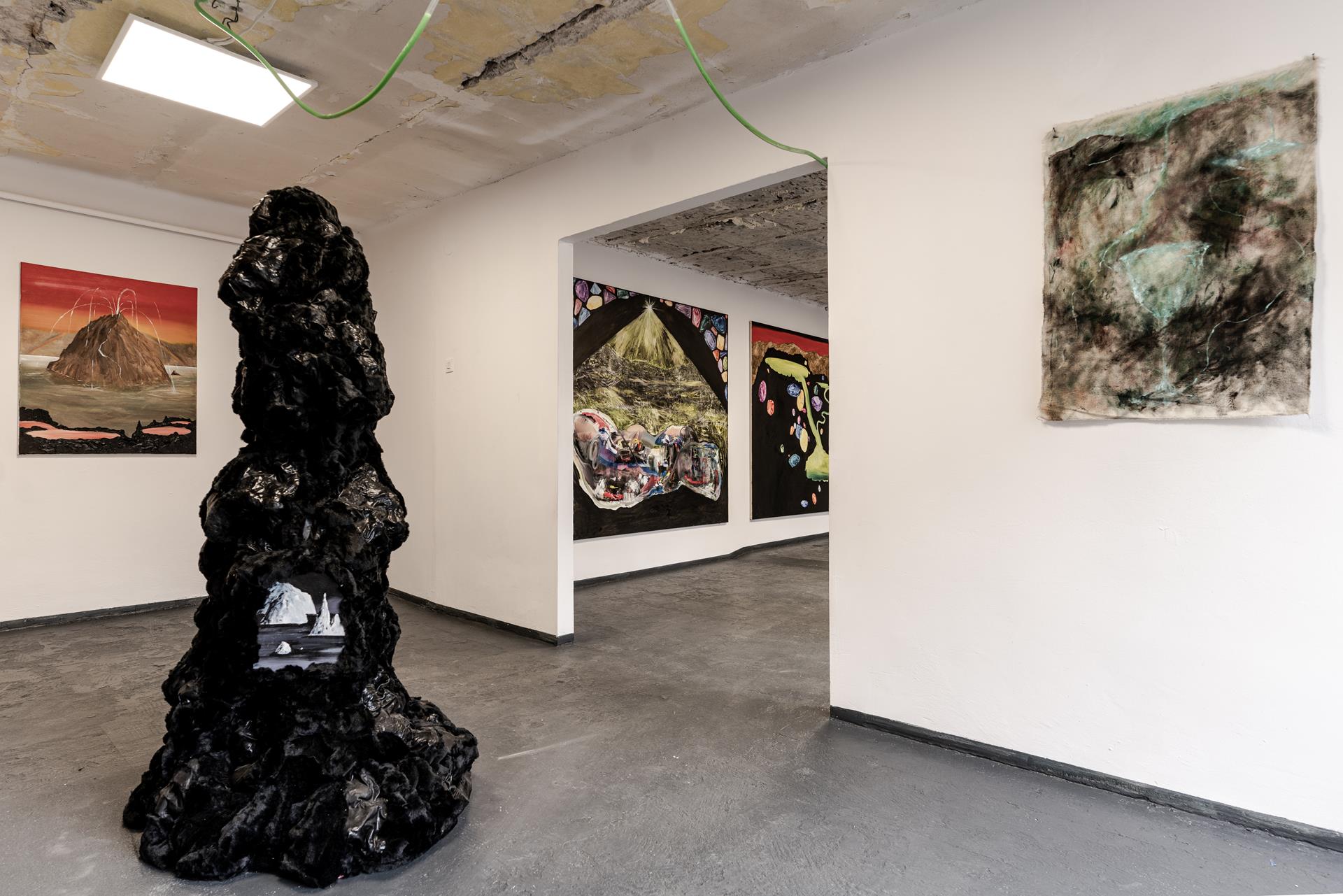BITTERNESS
Cracow, 1.04.2023 - 1.05. 2023
ARTISTS:
JULIA SZCZERBOWSKA
JULIA SZCZERBOWSKA
He opens his pus-stained eyelids. He tries to recall the images dreamed that night. He recalls swarms of bees. "The bees are for the fire," he thinks. He lifts himself up on his weak hands, puts his arched heels on the parquet floor and gets out of bed. He slowly picks up the bucket and walks with it to the garden to draw water. He doesn't need to see the ground he walks on, he feels it with his toes. She grasps the family garden, welcomed joyfully like every morning. But today it seems quieter to her than usual. Between the well and the pear tree she notices colorful crystals. They must have appeared here at night. They look like ripe fruit. Green, red, dark blue. They reflect the morning sun with their sharp edges.
The mother turns to the well and asks:
- Well, what are these crystals that have grown in my garden? My feet tremble restlessly standing on the same ground as them.
"Water knows everything," the women of the village once told her. "It has always been here and knows every secret on Earth.
- Don't touch them or they will burn the skin on your hands. This Earth no longer belongs to you.
But her feet will miss this Earth. She wouldn't be able to leave her beloved garden, the house where she was born and, of course, the well.
The air has no smell today. The wind has left her, the birds have flown away from here, even the insects are gone. Bees don't fly. Bees are for fire. "
Julia Szczerbowska
In Chernobyl Prayer, one of Svetlana Aleksievich's interlocutors recalls the sight of the dark blue and red lumps that appeared in her field and lasted there until the rain washed them away. The contamination of the soil after the reactor accident was so great that cesium was said to have formed colorful crystals on its surface. This was one of the signs of the end of the world.
The Apocalypse of St. John mentions a burning star that, having fallen to earth, poisoned the water, turning it into wormwood. In Chernobyl, which owes its name to this very plant, the puddles turned yellow and green. Radioactive contamination took on a rainbow robe, and on the rainbow sits, in Christian iconography, the King of the New Covenant, who judges the living and the dead at the end of time.
Visions of the end, however, are not just the domain of religious eschatology. In her work, Julia Szczerbowska explores the iconography of the end of the world as we know it. In the face of the catastrophe creeping towards us, she seeks a language to describe the future, which we can still change. The artist constructs paintings full of complex metaphors, but the reality she describes and fights for is only a fragile, sensitive matter.
In her paintings, in addition to poisonous crystals, we find beating springs - places of purification, a promise of renewal through constant transformation. Water, which covers more than seventy percent of our globe and which is the building block of all living bodies, is an element of unparalleled power but also immense sensitivity.
Science claims that it appeared on Earth from the outside, arriving on millions of bombarding comets and asteroids. Someday it will disappear from it, but for now it can teach us about how to challenge the most established patterns and how to build new relationships - perhaps the ones that can still save us.
The mother turns to the well and asks:
- Well, what are these crystals that have grown in my garden? My feet tremble restlessly standing on the same ground as them.
"Water knows everything," the women of the village once told her. "It has always been here and knows every secret on Earth.
- Don't touch them or they will burn the skin on your hands. This Earth no longer belongs to you.
But her feet will miss this Earth. She wouldn't be able to leave her beloved garden, the house where she was born and, of course, the well.
The air has no smell today. The wind has left her, the birds have flown away from here, even the insects are gone. Bees don't fly. Bees are for fire. "
Julia Szczerbowska
In Chernobyl Prayer, one of Svetlana Aleksievich's interlocutors recalls the sight of the dark blue and red lumps that appeared in her field and lasted there until the rain washed them away. The contamination of the soil after the reactor accident was so great that cesium was said to have formed colorful crystals on its surface. This was one of the signs of the end of the world.
The Apocalypse of St. John mentions a burning star that, having fallen to earth, poisoned the water, turning it into wormwood. In Chernobyl, which owes its name to this very plant, the puddles turned yellow and green. Radioactive contamination took on a rainbow robe, and on the rainbow sits, in Christian iconography, the King of the New Covenant, who judges the living and the dead at the end of time.
Visions of the end, however, are not just the domain of religious eschatology. In her work, Julia Szczerbowska explores the iconography of the end of the world as we know it. In the face of the catastrophe creeping towards us, she seeks a language to describe the future, which we can still change. The artist constructs paintings full of complex metaphors, but the reality she describes and fights for is only a fragile, sensitive matter.
In her paintings, in addition to poisonous crystals, we find beating springs - places of purification, a promise of renewal through constant transformation. Water, which covers more than seventy percent of our globe and which is the building block of all living bodies, is an element of unparalleled power but also immense sensitivity.
Science claims that it appeared on Earth from the outside, arriving on millions of bombarding comets and asteroids. Someday it will disappear from it, but for now it can teach us about how to challenge the most established patterns and how to build new relationships - perhaps the ones that can still save us.




